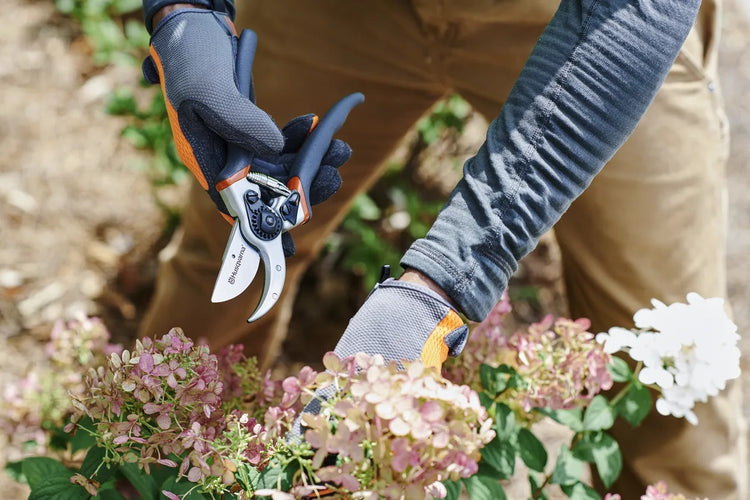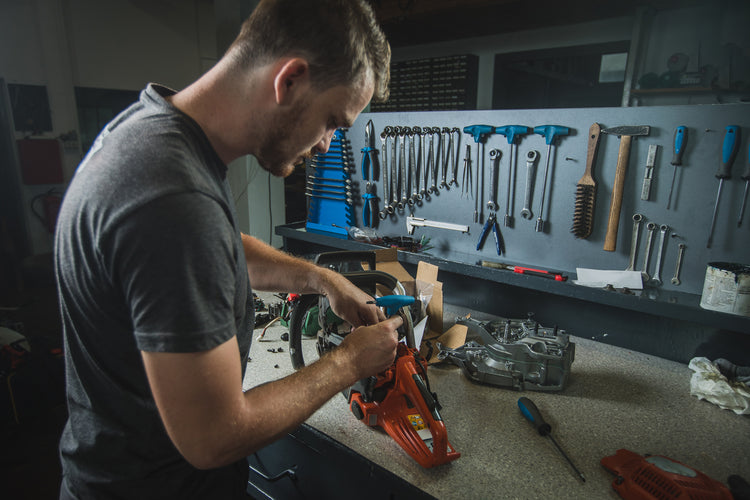Gardening and yard work often involve a range of tools, each with specific purposes and maintenance requirements. In this article, we will discuss pruners, pruning saws, axes, and splitting mauls, exploring their uses, types, and maintenance. We'll also recommend the best tools to invest in for your garden and yard work needs.
Pruners: The Essential Garden Shears
Pruners, also known as garden shears or hand shears, are essential hand tools used for trimming and shaping plants, bushes, and small branches. There are several types of pruners available, with bypass pruners, snips, and pruner shears being the most common.
Bypass pruners are the best garden shears for clean, precise cuts. They work like scissors, with two curved blades that slide past each other. Garden pruners like these are ideal for cutting live branches and green stems, as they minimize damage to the plant. Professional shears like bypass pruning shears are often recommended for maintaining healthy plants.
Snips are smaller and more delicate than pruner shears, making them the best hand pruners for fine work like deadheading flowers or trimming leaves. Garden pruning shears, on the other hand, are more robust and can tackle thicker branches.
Pruner Maintenance and Care
To keep your best pruners functioning efficiently, clean and sharpen the blades regularly. This should be done after every few uses or whenever you notice a decrease in performance. To clean your garden pruning shears or bypass pruning shears, use a mild soap and water solution, and dry them thoroughly to prevent rust.
How to Sharpen Pruners
- Gather the necessary tools: To sharpen your pruners, you'll need a sharpening stone or a diamond file, a clean cloth or rag, and lubricating oil. It's also a good idea to wear safety gloves to protect your hands during the process.
- Clean the pruners: Before sharpening, make sure to clean the pruner blades to remove any dirt, sap, or debris. You can use a mild soap and water solution or rubbing alcohol to clean the blades. Dry them thoroughly with a clean cloth to prevent rust.
- Disassemble the pruners (optional): If your pruners can be easily taken apart, you may find it easier to sharpen the blades separately. However, this step is optional, and you can still sharpen the pruners without disassembling them.
- Identify the beveled edge: Examine the blades of the pruners and locate the beveled edge, which is the angled side of the cutting blade. This is the side you'll sharpen.
- Sharpen the beveled edge: Hold the pruner steady, either in your hand or clamped to a stable surface. Position the sharpening stone or diamond file at the same angle as the beveled edge. Using moderate pressure, move the file in a sweeping motion along the edge, following the contour of the blade. Repeat this motion several times until the blade is sharp. Make sure to sharpen the entire length of the beveled edge evenly.
- Remove burrs: As you sharpen the beveled edge, a burr (a thin, rough edge) may form on the opposite side of the blade. To remove it, gently run the file or sharpening stone along the flat side of the blade, using very light pressure.
- Lubricate the blades: After sharpening, apply a small amount of lubricating oil to the blades to prevent rust and ensure smooth operation. Wipe off any excess oil with a clean cloth.
- Reassemble the pruners (if applicable): If you disassembled your pruners before sharpening, reassemble them according to the manufacturer's instructions.
- Test the pruners: Make a few test cuts on a branch or stem to ensure the pruners are functioning smoothly and making clean, precise cuts.
Remember to clean and sharpen your pruners regularly to maintain their performance and prolong their lifespan.
Pruning Saws: The Ideal Tree Saw
A pruning saw is a specialized garden tool designed for cutting larger branches that are beyond the capacity of hand tools like pruners. The best pruning saw for cutting branches will have sharp, curved teeth to ensure smooth, clean cuts. The main difference between a pruning saw and a handsaw is that pruning saws are designed for use on live wood, while handsaws are meant for cutting through dry, dead wood.
Pruning Saw Maintenance and Tips
To sharpen a pruning saw, use a round file that matches the size of the saw's teeth. The recommended length of a pruning saw blade varies depending on the size of the branches you need to cut, but a blade of 6 to 12 inches should suffice for most garden tasks.
Splitting Mauls and Axes: Essential Wood Splitting Tools
A splitting maul is a heavy-duty tool used for splitting logs and chopping firewood. It differs from an axe in that it has a broader, heavier head, which is more effective for splitting wood fibers. The best axe for splitting wood, on the other hand, is designed for chopping and has a thinner, sharper edge.
Using and Maintaining Splitting Mauls and Axes
To use a splitting maul, place the log on a stable surface and strike it with the maul's head, using the weight of the tool to do most of the work. To store splitting mauls or axes, hang them in a dry, cool area to prevent rust and handle damage.
Sharpening Tips for Splitting Tools
To sharpen a splitting maul or an axe, use a flat file or a sharpening stone, moving it in a circular motion along the edge of the blade. Regular sharpening will help maintain the performance of your landscaping hand tools and make chopping logs more efficient.
Conclusion:
Investing in the best pruners, pruning saws, and splitting mauls is essential for maintaining a beautiful garden and well-kept yard. Understanding the differences between these garden tools, their specific uses, and the proper maintenance techniques will ensure they remain effective and durable for years to come.
By choosing the right hand tools, such as bypass pruners, the best hand pruners for delicate tasks, and the best garden shears for more substantial cutting jobs, you'll be able to keep your plants, shrubs, and trees in top shape. Similarly, the best pruning saw for cutting branches will help you manage tree growth and maintain the overall health of your garden.
When it comes to wood splitting, selecting the best axe for splitting wood or investing in a high-quality splitting maul will make your job more manageable and efficient. Regular sharpening of your splitting tools, along with proper storage, will ensure their longevity and effectiveness.
In conclusion, a well-maintained garden and yard not only enhance your property's curb appeal but also provide a sense of accomplishment and pride. With the right hand tools, including pruners, pruning saws, and splitting mauls, you can create a beautiful outdoor space to enjoy for years to come.



